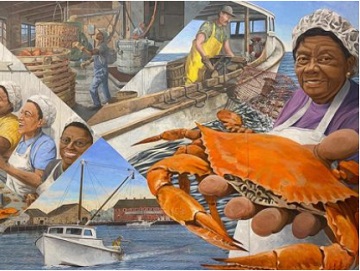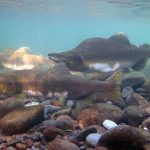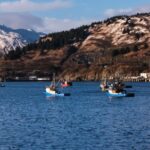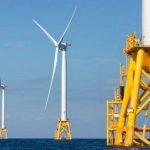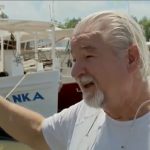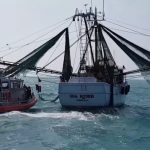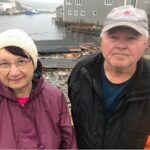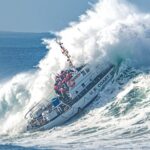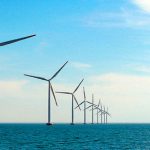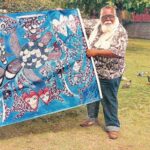Plenty of people in Ocean City, a popular beach community south of Atlantic City, are dead-set against a project proposed by Orsted and PSEG that still needs state approval to bring a power line onshore. “We don’t want this here in any way, shape or form,” said resident Suzanne Hornick, a leader of local opposition to the plan. The U.S. has 27 wind farm projects in development, with an additional five locations up for auction in California next month, according to the Business Network for Offshore Wind, a nonprofit dedicated to helping develop the offshore wind industry. If even a small portion of them were to face protracted legal or regulatory challenges, it could pose a serious obstacle to the industry. >click to read< 11:02
Tag Archives: Maryland
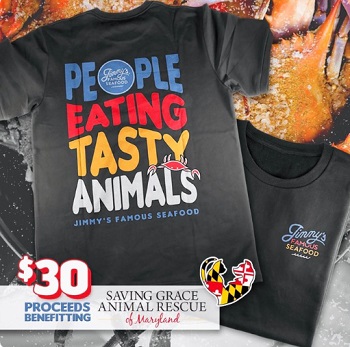
Maryland seafood locale claps back at PETA in billboard feud before crab season: ‘Brought religion into it’
Jimmy’s Famous Seafood, a seafood restaurant in Maryland, hit back after the People for the Ethical Treatment of Animals (PETA) launched a billboard near the restaurant in February that encouraged people to “go vegan.” PETA’s Lent-themed billboard read, “I never lent you my flesh, go vegan,” according to a video posted to Jimmy’s Famous Seafood’s Twitter page. The billboard included a picture of a cross and a fish. The seafood restaurant, located in Dundalk, Maryland, posted a photo of two billboards on Thursday advertising their restaurant in response. One said, “they died to be enjoyed” and the other read, “it’d be a sin to waste them.” Photos, >click to read< 08:07

Extended Va. Oyster Season Poised for Largest Harvest In 35 Years
With Virginia watermen enjoying their most bountiful wild harvest in 35 years, state fisheries managers have agreed to extend the season by two weeks. The Virginia Marine Resources Commission (VMRC) voted unanimously to allow wild oyster harvests for an extra 10 working days in areas where commission staff judged the bivalve populations abundant enough to withstand additional fishing pressure. “We’ve had a great oyster season, and it’s still going strong,” said J.C. Hudgins, head of the Virginia Waterman’s Association. “It’s been good everywhere we go.” Looking back, it’s quite a turnaround. >click to read< 07:36
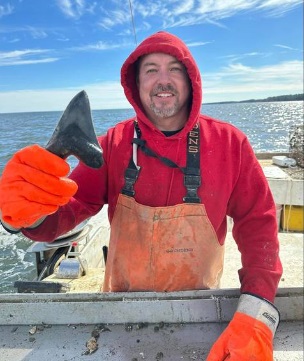
Fisherman finds huge megalodon tooth in oysters pulled from Maryland’s Chesapeake Bay
Another ancient shark tooth has been found along Maryland’s Chesapeake Bay, only this time it’s even bigger. The 5.5-inch megalodon tooth came out of the bay Feb. 10 hidden in a load of oysters, according to Stephen Rollins, captain of the fishing boat Undertaker. That makes the tooth about a half-inch longer than the one found Christmas Day by a 9-year-old girl at Maryland’s Calvert Cliffs State Park. >click to read< 21: 52

Ocean City calls for a halt on wind farm development after latest whale death
Ocean City officials are demanding answers tonight and calling for a halt on wind farm development. This comes after yet another dead whale washed ashore along the East Coast. The dead North Atlantic right whale washed ashore on Virginia Beach over the weekend, the fourth such case across the region this year, and while the cause of death hasn’t yet been released, the Town of Ocean City is urging both State and Federal officials to get involved. Mayor Meehan said other areas along the East Coast are also taking steps in an effort to halt the projects, citing conversations he’s had with other mayors who share the same concerns. >click to read< 09:56
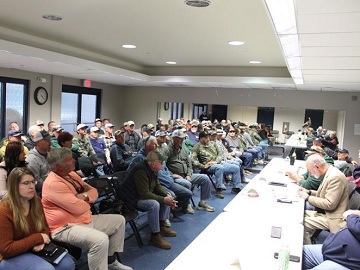
Watermen form Shore-wide caucus
With the appointment of a well-known environmental leader to the top natural resources position in Annapolis, Eastern Shore watermen decided it’s time to gear up to defend their livelihoods. About 50 commercial fishermen, along with a handful of local lawmakers, formed the nucleus of the new Eastern Shore Watermen’s Caucus to fund lobbying efforts in Annapolis and educate the public. Queen Anne’s County waterman and farmer Robert Newberry, chairman of Delmarva Fisheries Association Inc., organized the meeting, along with members of the DFA board of directors. Concerns about the new administration’s potential policies as well as the appointment of Josh Kurtz, Maryland Executive Director of the Chesapeake Bay Foundation, as Secretary of the Department of Natural Resources, prompted Newberry to invite watermen to form the caucus. photos >click to read< 09:40
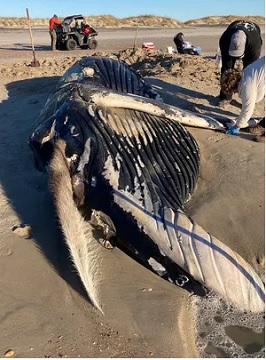
Whale deaths in NC and along the East Coast have officials searching for answers
On Jan. 7, a critically endangered North Atlantic right whale calf was found dead, wedged under a pier in Morehead City. In the previous month, three humpback whales washed up on beaches between Beaufort and the northern Outer Banks. The four North Carolina deaths are part of at least 14 whales that have washed up on East Coast beaches since Dec. 1. Federal officials, scientists and conservation groups have said there could be multiple factors contributing to the rise in whale strandings, including an increase in the population of the Western North Atlantic humpback whales. But one idea that’s gained traction online and among some coastal residents and politicians is that huge offshore wind farms planned off many East Coast states, including North Carolina, could be harming the marine mammals. >click to read< 08:46

Here’s why workers are digging Chesapeake Bay blue crabs out of the mud this month
On a recent gray January morning, they were working a section of the upper Chesapeake Bay off Rock Hall on the Eastern Shore. Capt. Roger Morris, a Dorchester County waterman who works under contract with the state’s department of natural resources, dropped a Virginia dredge off the stern of F/V Mydra Ann, his 45-foot Bay workboat, and let the attached chain pay out until the dredge hit bottom 20-some feet below, jolting the boat. A Virginia dredge refers to an eight foot wide piece of equipment with an attached net that gets dropped into the water to dredge for crabs. Morris eased the throttle forward and dragged the dredge through the mud for one minute at three knots, then hauled it back up, pausing to rinse the mud out before bringing it on board. photos, >click to read< 19:08
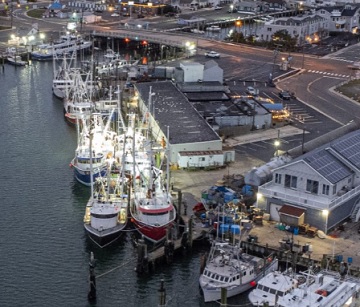
N.J., N.E., to Consider Fund to Compensate Fishermen for Revenue Lost to Offshore Wind Development
New Jersey is one of nine states that will consider a plan to establish a fund that would compensate commercial fishermen for losses that could be sustained due to impending offshore wind development. The states – Maine, New Hampshire, Massachusetts, Rhode Island, Connecticut, New York, New Jersey, Maryland, and Virginia – on Monday released a Request for Information (RFI) aimed at receiving input from impacted members of the fishing industry, offshore wind developers, corporate and financial management entities, as well as interested members of the public, to inform efforts to establish a regional fisheries compensatory mitigation fund administrator. “Mark off the area and then compensate us,” commercial fisherman Jim Lovgren, of Point Pleasant, said at a meeting on the topic five years ago,,, Photos, >click to read< 07:38
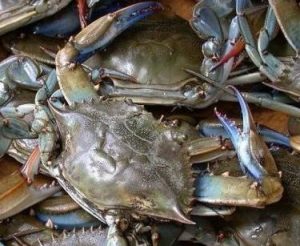
‘The seafood industry is significant to Maryland’s economy and identity’
Maryland’s seafood industry has long been the envy of markets around the country, providing more than $600 million each year to the state economy. Stone Slade, seafood marketing director for Maryland’s Department of Agriculture, said it isn’t hard to locate a “fresh catch” and the industry plays a key role in shaping the state’s identity. “The seafood industry contributes $600 million to the state’s economy, employs thousands of workers, has annual commercial landings averaging over 56 million pounds, and an annual dockside value of $95 million.” >click to read< 11:20

Public comment period opens on draft offshore wind areas
The federal Bureau of Ocean Energy Management on Wednesday announced that a 30-day public comment period has begun on eight draft offshore wind energy areas, including off the North Carolina coast. BOEM said it will hold virtual public meetings to engage the fishing community and environmental organizations to gather more information on the proposed areas and discuss next steps. The proposed areas cover about 1.7 million acres off North Carolina, Virginia, Maryland and Delaware. The distances to their closest points range from about 19 to 77 nautical miles offshore. >click to read< 08:10
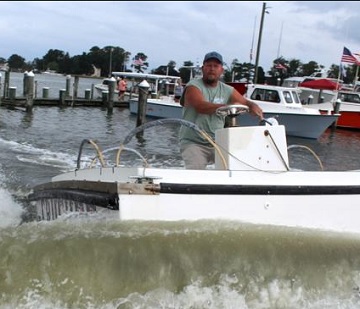
Hoopers Island Volunteer Fire Company holds boat docking contest
Boat dockers and bystanders braved cloudy skies and some precipitation to support the Hoopers Island Volunteer Fire Company boat docking on Sunday, Sept. 11, in Fishing Creek. Derrick Hoy in Crusher won the small boats category, Jake Jacobs in Outlaw secured the medium boats and John Ashton in Miss Julie won the large boats category. For results and 15 photos, >click to read< 08:47

50th Boat Docking Competition makes big splash in Crisfield
“It’s a good ole down home fun Sunday afternoon, end of the summer activity,” Waterman Kevin Marshall said. In Crisfield, that tradition is known as the Boat Docking Competition at the National Hard Crab Derby. It brings out community members of all ages for a day out at the dock. The timer starts once you leave the dock, as boaters head down the waterway quickly and then throw four lassos successful on the piles for a chance at the prize. Yet, competitors we spoke with say it’s not an easy task. “And I only have inches on each side when I go in the slip,” Commercial Fisherman Tommy Eskridge said. Video, >click to read< 07:47
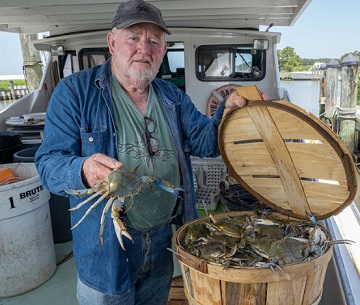
Decline in Chesapeake crab population sparks hunt for answers
Commercial crabbers in Maryland and Virginia aren’t catching their limits, and the harvest in the first few months of the season was so meager that some gave up trying. “Crabs are so scarce that me and my son are still catfishing,” Billy Rice, a Charles County, MD, waterman, said in June. “We’re making more money catfishing than we would be crabbing.” Based on what they see on the water, crabbers have no shortage of theories about why the Bay’s most prized catch is hard to find: Changes in water quality, climate change and an influx of crab-eating fish top the list. Whatever the case, said J. C. Hudgins, president of the Virginia Waterman’s Association. “Mother Nature has throwed a wrench in the barrel.” >click to read< 14:23

Maryland to restrict crabbing, including first-ever limits on harvest of male blue crab
Regulations issued this week, to be in effect from July through December, will limit commercial watermen to at most 15 bushels a day of male crabs in August and September. And the regulations will tighten existing restrictions on how many female crabs watermen can catch. The changes come weeks after an annual survey of Chesapeake blue crabs,,, That state fishery managers moved to limit even the harvest of male crabs demonstrates the gravity of the situation. Limits are typically only imposed on female crabs as a means of ensuring enough of them to survive to spawn, but with a more than 60% decline in the overall estimated blue crab population since 2019, scientists and representatives from the seafood industry are signaling that more protections are needed to help boost crab reproduction. >click to read< 16:02
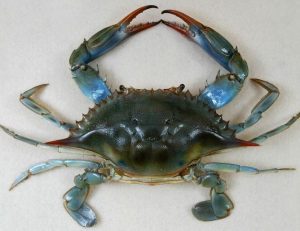
Chesapeake Bay blue crabs in trouble, tighter harvest restrictions loom
With the Chesapeake Bay’s crab population at its lowest ebb in more than 30 years, Maryland and Virginia are moving to curtail harvests in one of the region’s most valuable fisheries. Fisheries regulators in both states have proposed new catch restrictions, with plans to finalize them by the end of June. In Maryland, tighter limits for both commercial and recreational crabbing would take effect in July and for the first time would limit commercial harvests of male crabs, not just females. New commercial restrictions in Virginia would begin in October and continue until the crabbing season ends Nov. 30. >click to read< 08:17
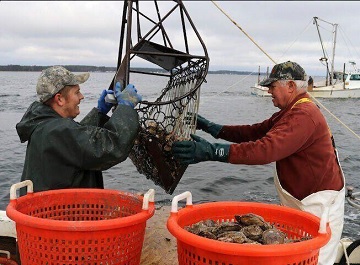
Maryland’s oyster harvest largest in 35 years
Bill Sieling, executive vice president of Chesapeake Bay Seafood Industries Association, attributes the excellent haul to both Mother Nature and the canniness of the Maryland oyster industry in putting available resources to their best use. “The combination of having the good substrate there for the young oysters to set upon and then having the oysters available in the area to produce the spawn which is what produces the spat set and therefore had a place to set and grow – and it’s as simple as that,” It takes three years for an oyster to grow to legal market size. This year’s harvest was the culmination of years of investment in the Bay’s oyster growing conditions, Sieling said. >click to read< 13:04

Hurricane Hazel: The 84-year-old World Champion crab picker from Crisfield, Maryland
If you live in the Crisfield area, you’ve heard the name Hazel Cropper, better known as Hurricane Hazel. She’s a world champion crab picker, and a famous figure in the town, or as she says, everywhere. “All over, I’m worldwide,” Hazel said. Her story starts in 1938 when she was born in the coastal town. “My parents raised me very well, and my grandmother, who taught me at the age of nine, to pick crabs, because I always followed her,” she said. She caught on quick and now, 75 years later, she’s a worldwide champion crab picker. “I’m in the Guinness Book of World Records, I’m a 16-time world champion,” Video, >click to read< 18:40

Skipjack Museum Restores Famed Captain’s City of Crisfield
The skipjack City of Crisfield is being given new life as the Skipjack Heritage Museum on Deal Island is currently involved in a complete restoration of the vessel at Scott’s Cove Marina in Chance, Md. “We also plan to work her in (Maryland’s) oyster dredge fishery and to carry passengers for charter to help offset the cost of maintenance and upkeep,” said Bob Shores. The City of Crisfield was built in 1949 by C. H. Rice and his son Ed at Reedville, Va. She was owned for many years by the legendary captain, Art Daniels Jr. who purchased the vessel in 1951 and owned it until his death in 2017. After his death, his son Bob Daniels gifted the vessel to Skipjack Heritage, Inc. >click to read< 11:02
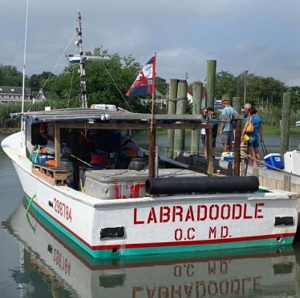
Offshore wind farm company, Ocean City fishermen at odds again
At question now is whether US Wind went back on its agreement with conch fishermen. “We told US Wind in January that we needed their ‘Area D’ (survey area) to be able to go conching in April. Ben Cooper from US Wind assured us that it would be available the whole month of April for us,” said Ocean City fisherman Jimmy Hahn. “I spent $60,000 in conch bait to go conching this spring. On March 25, they sent us an email that says, ‘Oh, by the way we’re going to start a brand new survey (there). “They’ve got 24 square miles of bottom they could be surveying and I’ve got a little teeny tiny area where my pots are. They still wiped out six of the pots that I found,,, >click to read< 07:17
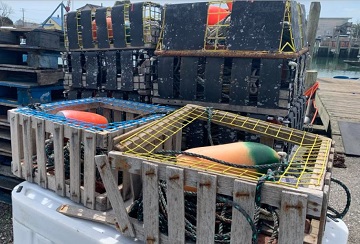
Ocean City Fishermen Say US Wind is to Blame For Their Damaged Gear
One fisherman is claiming more than a hundred thousand dollars worth of lost equipment. Jimmy Hahn has been in the business for 30 years. He said multiple pots have been damaged and towed by US Wind, who denies those allegations. “Ever since I’ve set my gear, they’ve been in my pots every single day,” he said. “They were in it on Friday, they were in it a little bit on Sunday, and then we had the whole incident on Monday.” US Wind is Maryland’s offshore developer. >click to read< 10:30
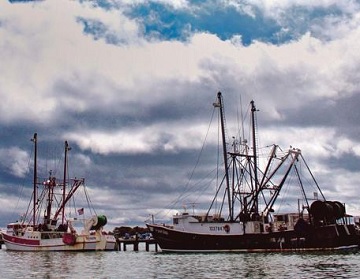
Maryland reps exploring shrimp fishery
A new shrimp fishery could be coming to Maryland, which would have direct benefits along the lower Eastern Shore. Last year, the state’s General Assembly approved legislation that allows the Department of Natural Resources to establish parameters for a shrimp fishery “pilot program” for certain commercial licenses. During the ensuing year, there has been some confusion about just how DNR could and should extend such authority, leading to twin bills in the Senate and House this year intending to clarify DNR’s roles and powers to adopt regulations. “A lot of people don’t realize there’s even a shrimp industry in Maryland,” >click to read< 10:36
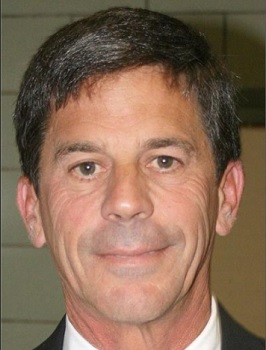
A message for Del. Jay Jacobs – This will not go unanswered.
Recent actions that you have taken, makes me put this letter together to address the situations at hand. First of all, your contact with an individual in Cecil County and the information that you gave him concerning Delmarva Fisheries Association is of great concern to all of us at DFA and our local affiliates,,, DFA was referred to as nothing but a scam just like the Chesapeake Bay Foundation, and it was said that DFA receives large sums of money directly from the sale of fishing licenses in the state. These two comments stated at a public meeting in Cecil County are outright lies and misinformation. The gentleman who spoke said he got this information from you and you alone! This will not go unanswered. >click to read< 09:11
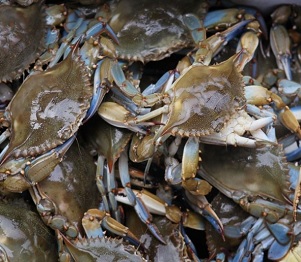
Maryland Crab Industry Says Labor Shortage Looms Again – Call for change to H2B Visa Program
Ask Jack Brooks, president of the Chesapeake Bay Seafood Industries Association, how the Maryland crab-picking season ahead looks right now, and he simply said, “Ugly.” The problem has nothing to do with the supply of crabs expected to be caught and processed in the crab houses of the Chesapeake Bay. The problem is labor. Every year, a total of 66,000 H-2B temporary work visas are up for grabs in a nationwide lottery. >click to read<
Hooper’s Island crab houses call for change to H2B Visa Program after 1 house out of 10 recieves workers – Phillips believes it’s not just the  crab houses that will close if this continues, the entire seafood infrastructure including watermen and wholesalers on Hooper’s island could be wiped out. “They could survive if there were one or two houses that miss out on visas but with nine out of ten [businesses] they are going to go out of business too,” he said. Video, >click to read< 12:37
crab houses that will close if this continues, the entire seafood infrastructure including watermen and wholesalers on Hooper’s island could be wiped out. “They could survive if there were one or two houses that miss out on visas but with nine out of ten [businesses] they are going to go out of business too,” he said. Video, >click to read< 12:37
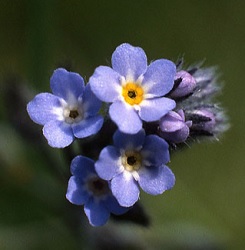
Veteran Waterman Kenley “Sonny” Tilghman Hampton, Jr. has passed away
Kenley “Sonny” Tilghman Hampton, Jr. of Centreville, MD passed away on January 11, 2022. Locally known as “Sonny Boy”. He was 89. After his father’s passing at a young age, Sonny gave up his education to help care for his mother and siblings. Well known as a Veteran waterman, first starting in our own backyard, him and his brother, Abby, were the first waterman to introduce diesel engines on their work boats. Whether it be advice or lending a helping hand he was always willing and ready to help within his community. A community in which he will be deeply missed. >click to read< 09:58
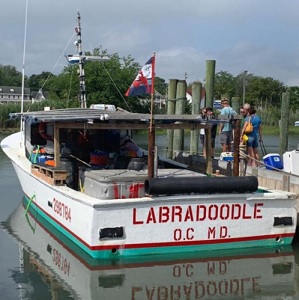
Wind reps, Ocean City fishermen still far apart – “We’re going to be pushed out,,,
Last week, representatives from US Wind, Director of External Affairs Nancy Sopko, Director of Marine Affairs Ben Cooper and Fisheries Liaison Ron Larsen, briefed the Mid-Atlantic Fishery Management Council on their progress in the area and their discussions with fishermen. “They’re trying to say they’re going to work with us said Roger Wooleyhan. When asked if the meeting signaled significant progress, Wooleyhan replied, “No, I don’t. We’re going to be pushed out and all these guys who are making a living are going to be put out. >click to read< 08:43
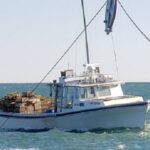 US Wind extends moratorium, Ocean City fishermen remain skeptical – Their fishery liaisons are working directly with local fisherman to ensure strong coordination between the industries. However, longtime Ocean City fisherman Jimmy Hahn wasn’t too thrilled by the supposed good news from US Wind. >click to read< 08:43
US Wind extends moratorium, Ocean City fishermen remain skeptical – Their fishery liaisons are working directly with local fisherman to ensure strong coordination between the industries. However, longtime Ocean City fisherman Jimmy Hahn wasn’t too thrilled by the supposed good news from US Wind. >click to read< 08:43
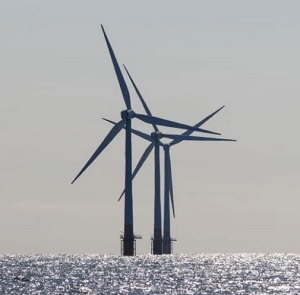
Watermen tackle offshore wind farm development concerns, company pushes (subsidized) economic benefit
“I just want to be able to go fishing.” Those were fisherman Jimmy Hahn’s words as he is one of many who are concerned about U.S. Wind offshore wind developments. Now with political leaders on their side, watermen hope to see some change moving forward. “Those guys have really stepped up to the plate. “People who buy electricity in the state are paying an extra amount in order to subsidize the windmills. That means that someone should stand up for these taxpayers. If we’re going to spend taxpayer dollars to build these windmills and subsidize them there should be proper oversight,” Representative Harris said. Another concern that came up Wednesday by waterman and Congressman Harris was the possibility of U.S. Wind not being an actual U.S. based company. >click to read< 09:03
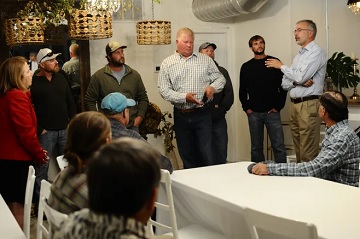
Fishermen feel “railroaded” – Standoff at sea sours fishermen, US Wind relations
After an on the water standoff between commercial fisherman Jimmy Hahn and a US Wind survey boat, Rep. Andy Harris met with area fisherman to discuss encroachment into fishing areas. The closed meeting Wednesday, also attended by state Sen. Mary Beth Carozza, included more than 12 fishermen primarily from Ocean City,, “If these wind mills are allowed to be placed out here, we’re out of business. You’ll no longer see any fresh seafood coming into Ocean City,” Hahn said.,, “It means a great deal having Rep. Harris listen,” he said. “You have to have someone to speak up. We’re just getting railroaded and we don’t have any say at all.” >click to read< 14:50
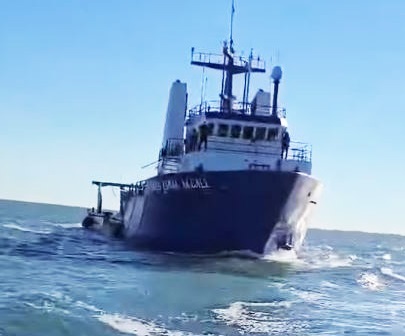
Watermen Meet Elected Reps Over Conflict – Conch Pots Destroyed By Offshore Wind Farm Survey Vessel
Last week, a US Wind vessel surveying offshore was outside the designated lease area and ran through a setup of conch pots and destroyed some of the commercial vessel’s equipment. Captain Jimmy Hahn, whose conch pots were destroyed, briefly confronted the survey boat Emma McCall,,, US Wind representatives explained how the survey vessel was out of the lease area and ran over the pots accidentally. For his part, Hahn believes the incident was a symptom of a much larger issue that is only going to get worse. Last week’s incident has captured the attention of the area’s elected officials. On Wednesday, U.S. Congressman Andy Harris and Senator Mary Beth Carozza held a closed-door meeting with local watermen.>click to read< 12:30






